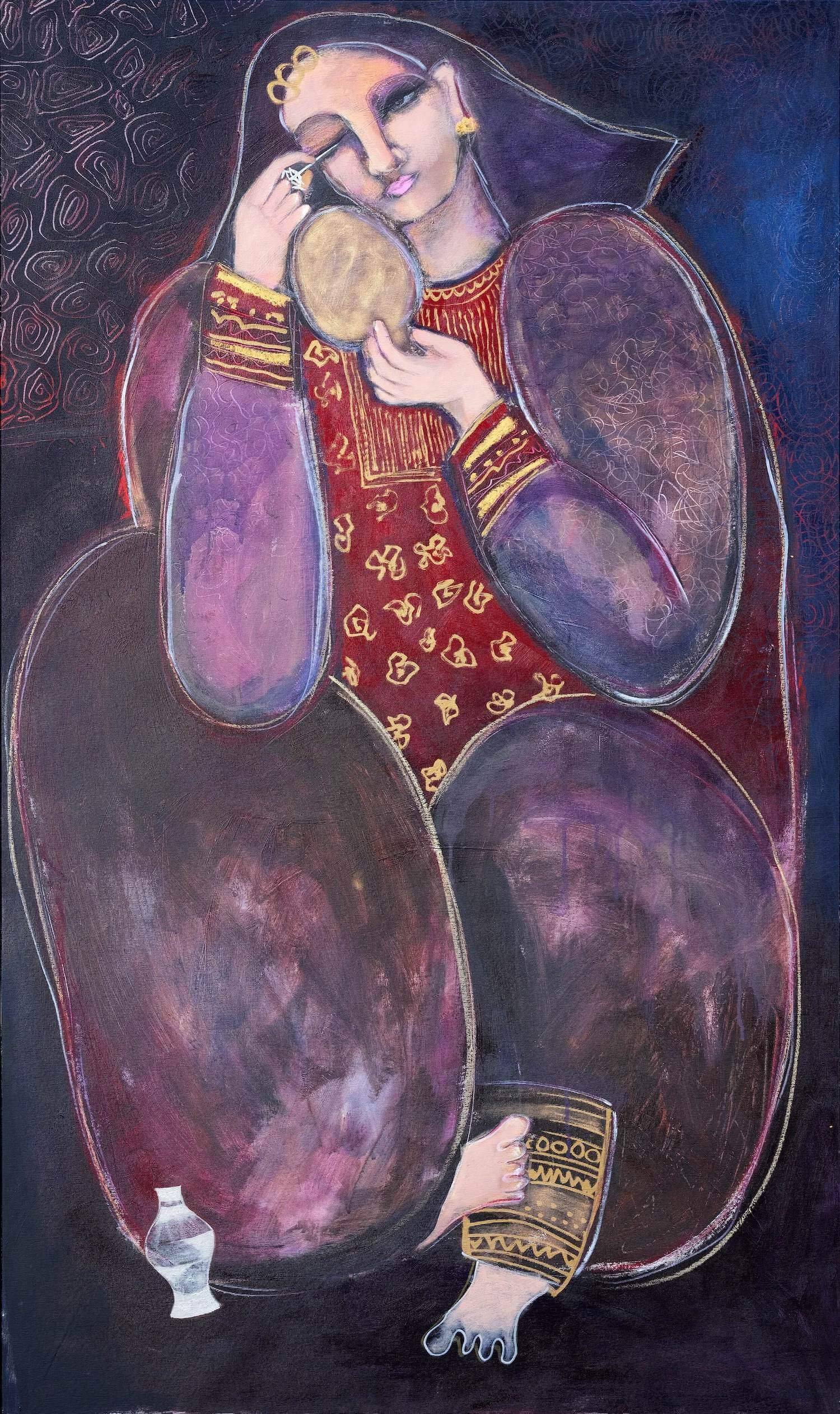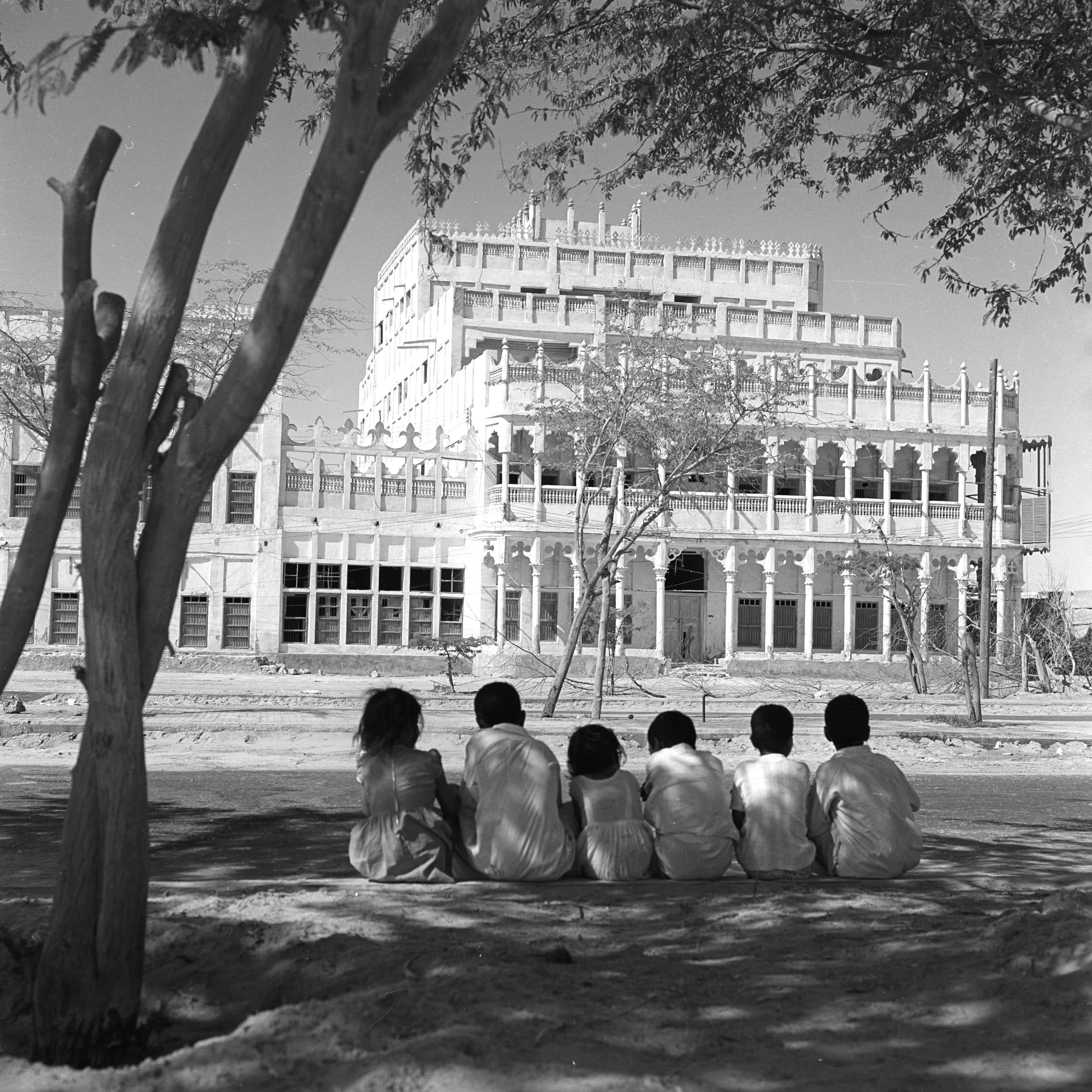Engineering Geometric identities
Sacred Geometry, 2019 acrylic on canvas.
Artist Um Kalthoom Al-Alawi.
Art is humanity's escape, despite all the pain and challenges it faces, because the element of resistance and clinging to life is the strongest in societies where art has become an integral part of their daily life”.
“Both identities, whether the national or the Islamic identity. have a strong influence on my personality as a human being, and on my identity as an artist who desires to express belonging and unity. I feel a strong connection to my Islamic and national identity, as both are one and inseparable entity”.
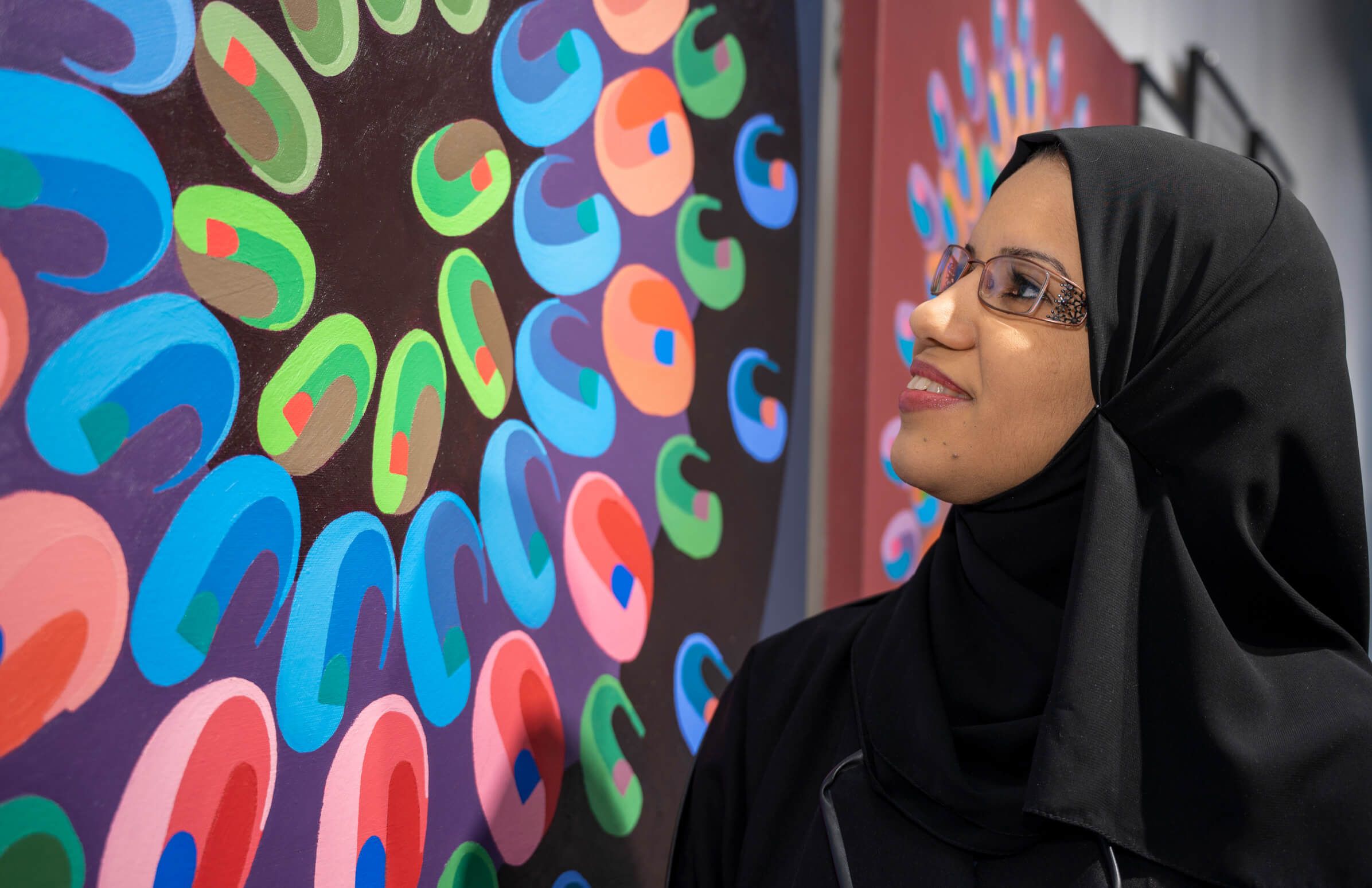
The artist Um Kalthoom Al-Alawi.
Saudi artist Um Kalthoom Al-Alawi was born in 1985, and was inspired by her specialization in microbiology, which paved the way for her curiosity to research forms, logic and concepts. She completed her education by obtaining another degree in visual arts. The artist used the space of interaction between the two spheres to evoke abstractions about life and growth that are often poetic.
Um Kalthoom Al-Alawi's collection of works reflects the balance between individual identities and social cohesion. Unity is the concept at the heart of work, highlighting people's need for connection and social solidarity as part of human nature.
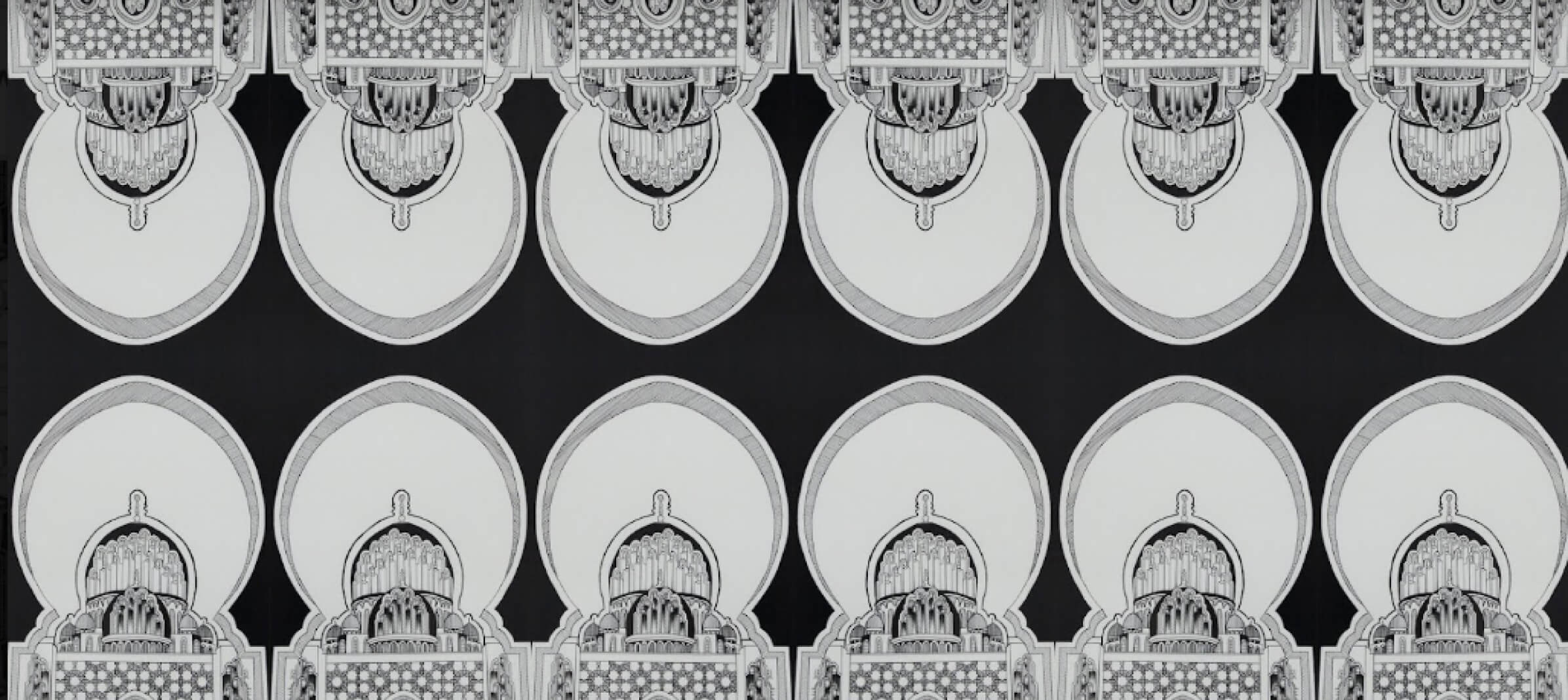
Sacred Geometry, courtesy of the artist.
The concept of identity has become an integral part of the contemporary narratives that we are exposed to, whether in art and literature, or in cultural production, and even in television advertisements. We often hear phrases such as "our strength is in our identity", "our culture is our identity", which has become the official phrase of the Ministry of Culture in the Kingdom of Saudi Arabia. Identity is a complex and multifaceted concept that artists often argued and confronted with when they were in the process of producing their artworks. How can an artist express their identity through their art? And what is their identity? And how they can formulate it visually or through sculpture, writing, musical or poetic works, etc.?
A person cannot have only one identity, as the concept of identity includes several concepts that overlap and intersect in a complex way that produces a human being.
Identity has dimensions related to gender, religion, language, land, region, state, family, race, and many others, all of which are different identities that interact with each other and intersect to produce the social human being.
We live in a time of many challenges, one of the biggest of which is our struggle to understand our original identity in our present, the time of the information revolution, which imposes continuous exposure and interaction with other cultures through traditional and new media, and social networks. We are no longer isolated as the previous generations were. The concept of identity has become vague, hazy and more complex, and it is difficult to define or limit it to one concept. In this dialogue, I highlight the work of the artist um Kalthoom Al-Alawi, and how the concept of identity affected her artwork, and how she was able to use her art to express herself and her identity.
Q1: When did your journey as an artist begin? Tell us about your beginnings?
My journey in the field of art began from a young age, I had several attempts to explore this new world, full of excitement and amazement. I watched stationery on a daily basis, and spent a lot of time contemplating those colors, brushes, and drawing tools that I was curious about how they were used. At that time, the sources to learn drawing were very few, and the Internet was not available to facilitate the learning process as it is nowadays, so I struggled to get the right methods and techniques to learn realistic drawing as a start. In addition, the art education classes were considered a free class by all students, and the topic that was always presented at them was free drawing.
Therefore, I resorted to many simplified books to learn the basics of drawing, even if the method was useless. My attempts to draw and simulate reality continued for several years, until some educational institutions started offering courses and workshops specialized in teaching drawing, and I joined some of them.
In 2007 my artistic journey began as a serious artist after I started a specialized study in visual arts. Since that time until now, I have been practicing art seriously, consciously, and differently than before.
Q2: How did you develop your artistic style? How did you find inspiration to create your own style?
I developed my artistic style through intense and continuous practice. Continuing to practice art for several long and continuous years is a challenge for any artist. Many people have enthusiasm in the beginning, but few are able to maintain that and infuse it with passion. Art is a long journey that requires endurance and persistence to continue to prove survival. Furthermore, it is my nature that when I indulge in working on a painting, the painting takes me to different dimensions that I did not discover at first, and I lose track of time, and I lose control of it and do not realize that it is the next day, until I turn towards the golden sun rays that reflect on the edges of my painting.

Sacred Geometry, 2019 acrylic on canvas., courtesy of the artist.
Reviewing, reading, participating in events and exhibitions, whether local or foreign, travelling, visiting the most important artistic monuments and museums, and contacting the local and international artistic community, all have an effective role in developing an artist’s style. If the artist is satisfied with their high skill in drawing, this alone is not enough to continue and become a true artist and a strong competitor.
When the artist is isolated all their life and spends their time only in their studio, they will not be able to advance in their art and drawing. Total isolation helps the artist at certain times, they may prepare for an exhibition or a large event, and so on, and they need to spend most of their day in their studio. But permanent seclusion in the studio inevitably robs the artist of a lot. Art is not only limited to its practice, but entering the theater is very important in order for the artist to develop their level and performance.
When an artist sees painting styles in galleries, museums, or other artistic events, it is an inspiration and an internal driver for them. But once they are satisfied with the same method, which they adopt in drawing for several long years without trying to develop their style, this will create boredom for them, their artistic production and their audience, because of their monotony and repetition.
Q3: Did your identity (national, religious, being a woman, etc.) contribute to the formation of your own style and artistic production?
There must be an influence of the artist's environment, upbringing, religion, beliefs, etc. in shaping the artistic identity of any artist. For me, the feeling of belonging to a particular place or environment is very important. Through the place of origin or what we call the homeland, the artist inspires the data of their art, and the message they want to talk about is formed through that. In a spontaneous, involuntary and unplanned manner, I found that women are the main focus of my work. I also found that affiliation to my religion and homeland is also clearly and obviously present. All these indirect symbols that I used touched the woman's identity, and her presence was overshadowing the artwork.
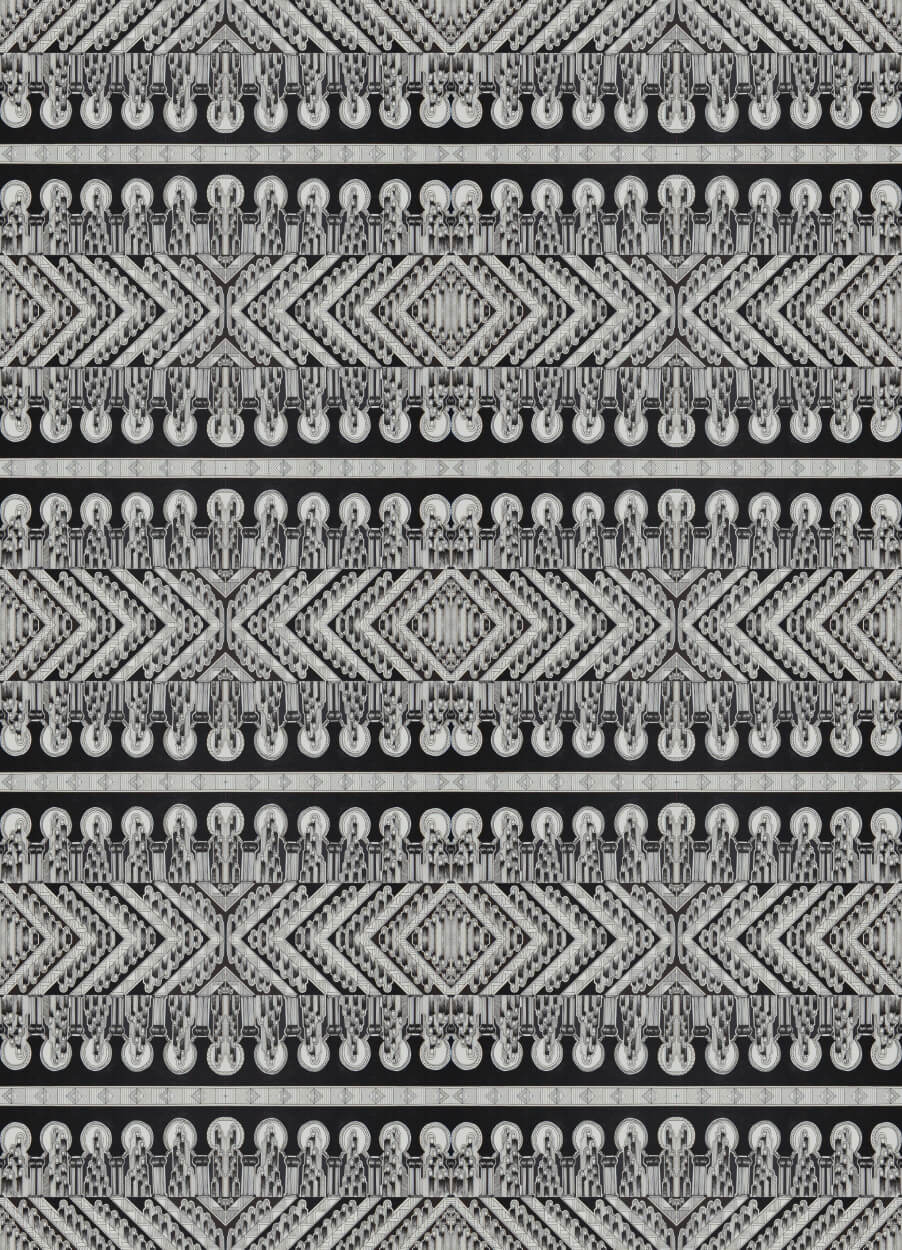
Spiritual Engineering, 2021, courtesy of the artist.
Q4: What topics do you explore in your art?
One of the most important topics I address is the expression of the power that emerges from societal unity. All my work embodies a huge variety of aggregates of varying sizes and areas. All these groupings symbolize that power does not arise from the individual, but rather from the union of the group. I also rely on several elements of expression, including line, color, geometric shape, reduction, repetition and stereotyping or what is called rhythm.
Despite intertwining and complexity of the lines, they give the illusion that they are made up of many different forms of lines. However, they are actually made up of only two lines, the horizontal and the vertical, and from these two lines I have created all blocks of different shapes. Just as the circle arises from a point and all geometric shapes arise from the circle. Here, the artist can also create shapes with different lines, originating from familiar shapes and lines.
Through the understanding and awareness of the regular geometric form and how it is formed, the artist can go out of the ordinary and create one or several forms that distinguish their art and are considered as a logo or symbol present in all their works, their characteristic that they created by themselves.
Additionally, one of the most important elements that I rely on in my artistic work is rhythm. Rhythm in fine art means the repetition of any of the similar shape elements, such as the repetition of the unit, and the distance between each unit and the other called a separator. In my expanded use of the rhythm element; I have the power of expressing the topic of unity. My style of drawing is also characterized by reduction; reduction is the essence of abstraction with simplifying and shortening the details. When we abstract an architectural scene into geometric shapes, we are thereby simplifying the shape while shortening its details, and the abstract painting appears in the form of accumulated blocks or scraps of paper that are just rhythmic pieces.

Sacred Geometry, courtesy of the artist.
Q5: Where do you get inspiration? How do you use this inspiration in your art?
I draw inspiration from many different sources, including the environment around me. My presence in a society with an Arab culture and an Islamic religion inspired me to use some of the symbols known in Islamic society. Such as the use of the element of domes, minarets, gates of mosques, and external structures of mosques. One of the most important symbols I use is the element of a woman drawn in an abstract way, and in several forms similar to the shapes of the Arabic alphabet. As is the case in Islamic arts, which depend on calligraphy and decoration, away from the drawing of spirits. Influenced by the Islamic art, I adopt the decorative method based on the element of repetition and stereotyping, which is the same method adopted in painting in Islamic arts.
Q6: How do you see your identity? And what identity do you feel a strong connection to?
Identity, whether it is national or Islamic identity, both have a strong influence on my personality as a human being and on my identity as an artist, who desires to express belonging and unity. I feel a strong connection to my Islamic and national identities, both are one and inseparable entity. My upbringing in the land of the Two Holy Mosques had a strong and clear impact on my style of drawing, and my style of presenting and discussing topics. This influence played a positive and significant role and was a source of attraction for the viewer and the audience.
Q7: What is “sacred geometry” and why is it repeated in your artistic production?
Engineering for me is an integral part of my artistic work, without it my work is incomplete. Since I am very skilled in geometric drawing, this made the task easy for me despite its difficulty. My previous study of microbiology also had a major role in my gaining a high skill in drawing the finest details. The reason for repetition, as I mentioned earlier, is that I rely on the element of rhythm in drawing, and this element is the main element in Islamic arts that depend on geometric drawing characterized by patterns and repetitions.
Q8: What are the ways in which you express your identity other than art?
I resort to writing to express my identity, even though I am not a writer. I also resorted to calligraphy in expression, even though I am not a calligrapher.
Q9: How did your art residency in the country affect your view of identity?
The country art residency program was one of the best residency programs I have joined. Because it allowed me to live in an archaeological and historical place and to inspire my idea and artistic production from it. I consider the program to be the golden opportunity that any artist aspires to have. It allows the artist to research heritage and history and sail into it. During my residency, I was drawn to the height of the buildings, the beauty of the dormers and oriels and their elongation over the height of the buildings from the bottom to the top. I was also intrigued by the idea of what it was like for women to work earlier, meeting in the dormers, sitting and watching the passers-by in the street.
And since I adopt the engineering style in drawing and the main focus of my work idea revolves around the meeting. Therefore, I chose the dormers and the oriels as a topic through which I express historical Jeddah; the Country.
The experience of the art residency program in it generated in me a great desire to repeat it and reside in the same place, as the country is a very inspiring place for any artist who wants to develop their creativity and improve their art.
Q10: Who are the artists who inspire you and why?
I am more influenced by calligraphers than I am by artists. This is because my style of drawing is closer to calligraphy and decoration. One of the most prominent Turkish calligraphers is Professor Mehmet Özçay.
Q11: What is the motto that you live by?
Maybe you think that you are a failure, and others are more successful than you, do not search for what you do not like, and start searching for what you like. All you need is with you, the future is in front of you, the past is behind you, and the present is in your hands, choose for yourself what you find suitable for it.
If you want to stay in the past, remember that it is over, and if you are afraid of the future, remember that it has not yet come, all you have is the moment, do not waste it, it is now in your hands.
Life is beautiful when you understand it, terrifying when you don't know it, good when you love it, bad when you hate it, so live what you have left in your life with peace and contentment.
Q12: What does art mean to you?
Art is the window that overlooks the future; it takes you from the world of the past, transfers you through time to the present, and throws you into the arms of the future.
Art is humanity's escape, despite all the pain and challenges it faces, because the element of resistance and clinging to life is the strongest in societies where art has become an integral part of their daily life.
Art in all its aspects, whether it is music, literature, fine art, and other contemporary arts, has become an urgent need for societies to be able to live and continue.
